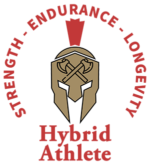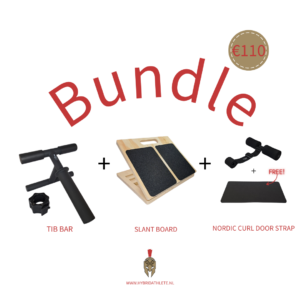
Traditionally, athletes from all types of sports have been told never to go knees over toes in movements like squatting or lunging. This was the great boogyman that people believed could destroy joints and ligaments surrounding knees and ankles.
However, there has been a strong current of healthy athletes that promote knees-over-toes movements, claiming that KOT movements can bulletproof your joints and prevent injuries.
So, what gives?
Table of Contents
THE CORE CONCEPT OF KNEES OVER TOES (KOT) TRAINING
One of the things most gym-goers (or even professional athletes) lack is the strength and stability of “lesser-used” muscles in the lower body. You rarely see someone doing an ATG split squat or tib raises at the gym.
But, since the lower body participates in every major movement (yes, even the bench press), those support muscles need to follow the large muscle group gains. If that’s not the case, the chances for injury skyrocket easily.
Essentially, KOT movements allow your body to strengthen the ankle-knee-hip connection and create a sturdy foundation to stand on.
Luckily, the stigma around KOT movements is fading. We can see fitness influencers like KneesOvertoesGuy and SquatUniversity talk more and more about the importance of reaching your full range of motion when it comes to the lower body. Ben Patrick even talks about how KOT training helped him avoid surgery and dependence on painkillers.
EXERCISES TO HELP YOU GET STARTED
Since knees-over-toes training is gaining in popularity, people are already getting caught in choice paralysis. So, here’s how to start your KOT injury-prevention journey:
TIBIALIS RAISES
The popular tib raises are used to target the tibialis anterior, hence the name. This muscle runs along the shin and plays an important role in ankle dorsiflexion, as well as foot and knee stability.
You can start with the bodyweight versions, but once you reach the plateau, you can switch to weighted variations. We encourage you to check out our Hybrid Athlete Tib Bar which you can use even once you reach pro levels. (Also, shipping’s free in the EU)

ATG SPLIT SQUATS
The ATG split squats are easy to remember thanks to their power pose aesthetics. This exercise was popularized by Ben Patrick of the Athletics Trouth Group (hence the acronym). The ATG split squat strengthens the foot-knee-hip by insisting on the full range of motion during the “lunge” movement.
By pushing your lower body to its limits, through controlled movement, the ATG split squats help with injury prevention. The full knee bend is crucial if you’re training for strength AND endurance.
NORDIC CURLS
The Nordic curls focus on the posterior chain. The hamstrings play an important role in virtually every composite body movement. So, we realized that by developing strong and resilient hamstrings, we also invest in injury prevention.
Similar to KOT squats, the learning curve for Nordic curls is quite steep. Luckily, you can master nordic curls at home, with some patience and some proper gear for it.
Injury prevention comes first
As you can see, the knees-over-toes methodology can help you build strength, mobility, and endurance in the areas you didn’t know existed, but are crucial. But above all, as an injury prevention approach, KOT builds longevity!
To be able to lift heavy and run far, you need to build a sturdy, long-lasting foundation.










